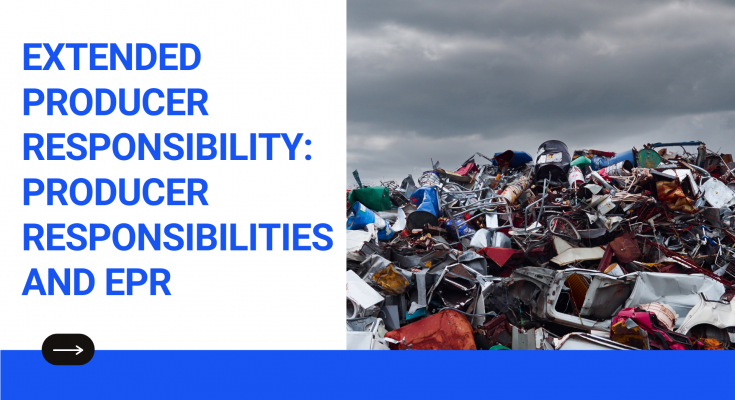In all types of waste management rules notified in 2016, the Ministry of Environment, Forests, and Climate Change has put a special focus on improving the Extended Producer Responsibility. This may aid the nation in developing an effective waste management system that is shared by all stakeholders in society.
Extended Producer Responsibility (EPR) is a concept that states that product manufacturers, producers, brand owners, and importers should bear a significant amount of responsibility for the environmental impacts of their products during the product life cycle, including raw material selection, packaging design, and efficient manufacturing processes with minimal environmental impact.
Extended Producer Responsibility’s Objective
- To promote the storage and recycling of plastic waste, increase the minimum thickness of plastic carry bags from 40 to 50 microns and specify a minimum thickness of 50 microns for plastic sheets.
- Extend the jurisdiction of applicability from municipal to rural areas, as plastic has made its way into rural areas.
- As part of extended producer responsibility, a scheme for collecting back plastic waste from producers/brand owners has been implemented.
- Promoting the use of plastic waste for road construction, energy recovery, waste to oil, and other profit-making uses of waste, as well as addressing the issue of waste disposal; entrusting waste generators with additional responsibilities, such as payment of user fees as prescribed by local authorities, collection and transfer of waste by the EPA
Extended Producer Responsibility’s Applicability
- Local Organizations:
The local government, on its own or with the help of agencies or manufacturers, is responsible for the creation and implementation of the plastic waste segregation, collection, storage, transportation, processing, and disposal system.
- Gram Panchayat:
A gram panchayat is a local government unit in India
Each gram panchayat, either independently or through the engagement of an agency, shall create, operate, and organize waste management in the rural area under their jurisdiction, as well as perform the following functions:
A. plastic waste segregation, storage, transportation, processing, and channeling of recyclable plastic waste fractions to validly licensed recyclers; ensure no environmental harm occurs during this process.
B. Making all stakeholders aware of their responsibilities
C. Limiting the open burning of waste plastics
- Producers, Importers, and Owners of Brands
PRODUCER RESPONSIBILITIES AND EPR
The extended producer responsibility includes three responsibilities, the scope of which is defined by law. The following are the three liabilities
- Economic responsibility suggests that the manufacturer will cover all or part of the costs, such as collection, recycling, and final disposal of the items he produces. These costs could cover either directly by the manufacturer or by a special charge.
- Physical responsibility is a term used to describe processes in which the manufacturer is responsible for the physical control of goods and/or their results. The producer may still maintain control of his product during its lifecycle, making him liable for any environmental harm it causes.
- Informative responsibility refers to a number of ways to expand product responsibility by requiring manufacturers to provide details on the environmental properties of the goods they are producing.
This EPR System has a number of advantages.
- Brand and location humanist.
- There are no differences between states that would make implementation challenging.
- Promoting India’s ease of doing business.
As a result, the proposed EPR (extended producer responsibility) framework’s guiding principles seek to boost collection and recycling rates while also setting out a plan for cost-cutting, value chain optimization, and a consistent and well-functioning waste management ecosystem. EPR, if properly applied, can be a powerful driving force in the transition to a circular economy.



